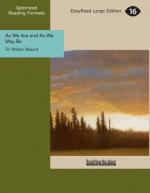Again, we may wander in the City and remember the great men who have made certain streets for ever famous. Thus, to stand in Bread Street is to think of Milton. Here he was born, here he was baptized, here for a time he lived. Or we may visit Blackfriars and remember the Elizabethan dramatists. Here Shakespeare had a house—it was among the ruins of old Blackfriars Abbey, part of the foundations of which were found when some years ago they made an extension of the Times’ printing office. Broad Street recalls the memory of Gresham, while that of Whittington lingers along Thames Street and College Hill and clings to St. Michael’s Church. In that parish he lived and died. Here he founded the College of the Holy Spirit which still exists in the Highgate Almshouses; on its site the boys of Mercers School now study and play. His tomb was burned in the Great Fire and his ashes scattered, but the very streets preserve his name. Boas Alley, of which there are two, records the fact that Whittington brought a conduit or Boss of fresh water to this spot. It was he who paved Guildhall, he who built a hall for the Grey Friars, now the Blue Coat School, he who rebuilt Newgate; of all the merchants who have adorned the great City not one whose memory is so widely spread and whose example has so long survived his death. When country boys think of the City of London they still think of Whittington.
Perhaps you are afraid that the preparation, the reading, for such a walk about the City would be dull. I have never found it so. I do not think that anyone who has the least love for, or knowledge of, old things would find such reading dull. There are, to be sure, some unhappy creatures who love nothing but what is new, and esteem everything for what it will fetch. These are the people who are always trying to pull down the City churches. They are at this very moment pulling down another, the poor old church of St. Mary Magdalen. The tower is down, the roof is off the windows are all broken, in a week or two the church will be razed to the ground, and in a year or two its very memory will have perished. Why, we vainly ask, do they pull it down? What harm has the old church done? To be sure its congregation numbered less than a dozen, but then we must not estimate an old church by a modern congregation. There has been a church here from time immemorial. It is mentioned in the year 1120. It was, therefore, certainly a Saxon church. Edward the Confessor probably worshipped here—perhaps King Alfred himself. One of its Rectors was John Carpenter, executor of Whittington, and founder of the City of London School; another was Barham, author of the ‘Ingoldsby Legends.’ The loss of St. Mary Magdalen is one more link with the past absolutely destroyed, never to be replaced. These destroyers, for instance, are the kind of people who pulled down Sion College. As often as I pass the spot where that place once stood I mourn and lament its loss more and more.




